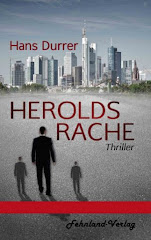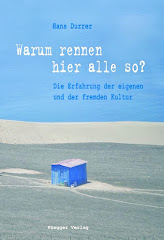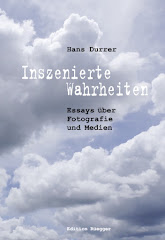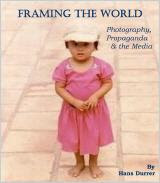Sunday 29 July 2012
Sunday 22 July 2012
Das BILD-Buch
Ein solch grossformatiges
und schweres (11 Kilo zeigt meine Waage an) Buch hatte ich noch nie in Händen: Hardcover, 37,2 x 53 cm, 748
Seiten.
Über 700 Titelseiten,
alle im Zeitungsformat, je eine Seite aus jedem Monat seit dem 24.
Juni 1952, dem Gründungstag von BILD.
Hier eine Auswahl meiner
Lieblingsüberschriften:
Das verdammte Geld machte
meinen Mann zum Spion (31. Oktober 1968).
Sex-Droge: Bein steif (24. November 1986).
Rezept für glückliche Ehen: ein bisschen schwindeln (13. Dezember 1986).
Honecker lebt, liest BILD,
und ärgert sich (13. September 1989).
Macht das Handy Männer doch unfruchtbar? (25. Oktober 2006).
"Zuweilen reflektierten die Titelzeilen keine Realität mehr, sondern wurden kunstvoller Selbstzweck - bis hin zur dadaistischen Lautmalerei", schreibt Stefan Aust in seinem Beitrag "Keine Atempause: 60 Jahre BILD". Beispiele gefällig? "Franzi, Franzi, wunderbar." "Guru Franz - meine Botschaft. 1. Kehrt um, liebt euch 2. Wir sind unsterblich 3. Lebt wie Brüder und Schwestern". "Brando frisst sich tot". "Naddels Pfui-TV, Kanzler tobt".
Ferdinand von Schirach hat auch einen Text beigesteuert ("Paternoster"). Darin erfährt man unter anderem, dass er nach Alpträumen zum Bücherschrank geht und in den alten Entscheidungen des Bundesverfassungsgerichts liest. Zudem zitiert er den Vorstandsvorsitzenden der Axel Springer AG, Mathias Döpfner, mit dem Satz: "Für die BILD-Zeitung gilt das Prinzip: Wer mit ihr im Aufzug nach oben fährt, der fährt auch mit ihr im Aufzug nach unten."
Laut Sebastian Turner ("Gefühlte Geschichte") ist es das Wechselspiel von Bild und Text, das die BILD-Zeitung ausmacht: "... die Text-Foto-Spannung lädt BILD auf. Gefühl kommt zum Bild erst durch das Wort und die Aufladung zwischen beiden. Als Axel Springer 'Bild' sagte, hatte er Spannung gemeint." Es lohnt, sich das vorliegende Werk mit diesem Gedanken im Kopf vorzunehmen.
"Zuweilen reflektierten die Titelzeilen keine Realität mehr, sondern wurden kunstvoller Selbstzweck - bis hin zur dadaistischen Lautmalerei", schreibt Stefan Aust in seinem Beitrag "Keine Atempause: 60 Jahre BILD". Beispiele gefällig? "Franzi, Franzi, wunderbar." "Guru Franz - meine Botschaft. 1. Kehrt um, liebt euch 2. Wir sind unsterblich 3. Lebt wie Brüder und Schwestern". "Brando frisst sich tot". "Naddels Pfui-TV, Kanzler tobt".
Ferdinand von Schirach hat auch einen Text beigesteuert ("Paternoster"). Darin erfährt man unter anderem, dass er nach Alpträumen zum Bücherschrank geht und in den alten Entscheidungen des Bundesverfassungsgerichts liest. Zudem zitiert er den Vorstandsvorsitzenden der Axel Springer AG, Mathias Döpfner, mit dem Satz: "Für die BILD-Zeitung gilt das Prinzip: Wer mit ihr im Aufzug nach oben fährt, der fährt auch mit ihr im Aufzug nach unten."
Laut Sebastian Turner ("Gefühlte Geschichte") ist es das Wechselspiel von Bild und Text, das die BILD-Zeitung ausmacht: "... die Text-Foto-Spannung lädt BILD auf. Gefühl kommt zum Bild erst durch das Wort und die Aufladung zwischen beiden. Als Axel Springer 'Bild' sagte, hatte er Spannung gemeint." Es lohnt, sich das vorliegende Werk mit diesem Gedanken im Kopf vorzunehmen.
Das BILD-Buch ist nicht zuletzt ein Zeitdokument. Das will nicht heissen, dass es beziehungsweise die BILD-Zeitung die jeweilige Zeit abbildet (das tut kein Buch und keine Zeitung), das will heissen, dass wir die jeweilige Zeit durch die BILD-Sicht zu sehen kriegen. Gleichzeitig jedoch, und in diesem Sinne ist dieses Buch auch Zeitdokument, können wir mitverfolgen, welche Ereignisse den damaligen Zeitungsverantwortlichen Wert schienen, ihrer Leserschaft mitgeteilt zu werden - dabei staunt man, wie vieles einem nicht oder nicht mehr präsent ist.
Pocken-Alarm in aller Welt (12. Januar 1962).
US-Negerführer: Die schwarze Revolution hat begonnen (25. Juli 1967).
Es ist einfach herrlich! Die farbige Mattscheibe verzaubert alle (26. August 1967).
Ehebruch nicht mehr strafbar (31. Oktober 1968).
Was sind das eigentlich für Leute, die für BILD texten? Einer von ihnen ist Franz Josef Wagner, der bekennt: "Ich schreibe gern für BILD. Weil ich schreien darf, mich aufregen darf." Wenn dabei Sätze rauskommen wie "Wir sind Papst" ist das echt toll, bei Sätzen wie (in Sachen Guttenberg) "Wir finden die GUTT! Nörgler, Neider, Niederschreiber: Einfach mal die Klappe halten!" ist das hingegen mehr als bedenklich, aber eben auch eine treffende Selbstcharakterisierung.
Das BILD-Buch
Es ist einfach herrlich! Die farbige Mattscheibe verzaubert alle (26. August 1967).
Ehebruch nicht mehr strafbar (31. Oktober 1968).
Was sind das eigentlich für Leute, die für BILD texten? Einer von ihnen ist Franz Josef Wagner, der bekennt: "Ich schreibe gern für BILD. Weil ich schreien darf, mich aufregen darf." Wenn dabei Sätze rauskommen wie "Wir sind Papst" ist das echt toll, bei Sätzen wie (in Sachen Guttenberg) "Wir finden die GUTT! Nörgler, Neider, Niederschreiber: Einfach mal die Klappe halten!" ist das hingegen mehr als bedenklich, aber eben auch eine treffende Selbstcharakterisierung.
Das BILD-Buch
Taschen, Köln 2012
ISBN 978-3-8365-3863-3
Sunday 15 July 2012
Steve McCurry
End of June, I went to see an exhibition of Steve McCurry's photographs in Copenhagen. I do not recall a photo-exhibition that has impressed me more. This had not only to do with the photographs but also with the venue, a huge hall, divided into several smaller ones (Øksnehallen).
The Afghan girl with the green eyes, taken in 1984, is very probably McCurry's best known picture. At the Copenhagen exhibition, a video documentary about the search for the girl (nobody seemed to know who she is) was shown - despite press reports to the contrary, she has not been found. That is what I remember. Later on, however, I've read that McCurry claimed that she had indeed been found.
Steve McCurry/ Magnum Photos/ Agentur Focus
Many of the photographs in Steve McCurry's stern FOTOGRAFIE Heft 68 / 2012 were shown at the Copenhagen exhibition. I thought especially the colours extraordinary and was wondering whether these were colours actually found in real life or whether the pics were heavily photoshopped. stern-Artdirector Johannes Erler writes in the foreword: "Steve McCurry does the impossible. He bewitches us with colours in a way only nature and her elements otherwise do. We look at his photographs with a sense of amazement and wonder whether what we are seeing is actually real. But is has to be be. Otherwise these pictures would not exist". In regards to some of the pics in this tome, I'm still not sure ... but there is no doubt: these colours are truly stunning and superb.
Many of the photographs in Steve McCurry's stern FOTOGRAFIE Heft 68 / 2012 were shown at the Copenhagen exhibition. I thought especially the colours extraordinary and was wondering whether these were colours actually found in real life or whether the pics were heavily photoshopped. stern-Artdirector Johannes Erler writes in the foreword: "Steve McCurry does the impossible. He bewitches us with colours in a way only nature and her elements otherwise do. We look at his photographs with a sense of amazement and wonder whether what we are seeing is actually real. But is has to be be. Otherwise these pictures would not exist". In regards to some of the pics in this tome, I'm still not sure ... but there is no doubt: these colours are truly stunning and superb.
Steve McCurry/ Magnum Photos/ Agentur Focus
"After a while I developed a certain method of working where I either got my shot quickly before I am noticed; or I hung around my subjects so long until they get bored or accostumed to me and continue about their usual routine", McCurry states. The latter must have been the case when he photographed the fishermen on stilts in Sri Lanka, a painting-like shot that to me, in regards to colours, seems almost too good to be true.
The photographs in this tome were taken in Afghanistan, India, Pakistan, Sri Lanka, Peru, Japan, Saudi Arabia, Kuwait, and New York, and they are accompanied by an informative essay by Jochen Siemens who, among other things, quotes McCurry's conviction that "you have to search for every single picture" for the simple reason that "pictures don't just walk past you". Good point indeed! And much more convincing than this one: "McCurry says that he could imagine all his pictures in black and white". Apart from the fact that I find this difficult to believe (on the other hand: what do I know of this man's imagination?), I'm not terribly sure what he wants to say with this for it is precisely the colours that make his pictures so special.
In sum: I love these photographs!
o warm to McCurry's state, I do warm to cCurry's statement: "I want to be part of a trad
PS: stern FOTOGRAFIE Heft 68 / 2012 is accompanied by Talents - the booklet in which McCurry talks about Kitra Cahana, "who published her first picture of the Israeli withdrawal from the Gaza Strip on the front page of the New York Times in 2004 - at the age of just 17". The photo below shows highschool seniors filming their friends during their weekly Fight Club.
"After a while I developed a certain method of working where I either got my shot quickly before I am noticed; or I hung around my subjects so long until they get bored or accostumed to me and continue about their usual routine", McCurry states. The latter must have been the case when he photographed the fishermen on stilts in Sri Lanka, a painting-like shot that to me, in regards to colours, seems almost too good to be true.
The photographs in this tome were taken in Afghanistan, India, Pakistan, Sri Lanka, Peru, Japan, Saudi Arabia, Kuwait, and New York, and they are accompanied by an informative essay by Jochen Siemens who, among other things, quotes McCurry's conviction that "you have to search for every single picture" for the simple reason that "pictures don't just walk past you". Good point indeed! And much more convincing than this one: "McCurry says that he could imagine all his pictures in black and white". Apart from the fact that I find this difficult to believe (on the other hand: what do I know of this man's imagination?), I'm not terribly sure what he wants to say with this for it is precisely the colours that make his pictures so special.
In sum: I love these photographs!
o warm to McCurry's state, I do warm to cCurry's statement: "I want to be part of a trad
PS: stern FOTOGRAFIE Heft 68 / 2012 is accompanied by Talents - the booklet in which McCurry talks about Kitra Cahana, "who published her first picture of the Israeli withdrawal from the Gaza Strip on the front page of the New York Times in 2004 - at the age of just 17". The photo below shows highschool seniors filming their friends during their weekly Fight Club.
Kitra Cahana / Reportage by Getty Images
Steve McCurry
stern FOTOGRAFIE Heft 68 / 2012
Sunday 8 July 2012
A week in Copenhagen
Photograph by Elias von Arx (5)
In the last week of June, in Copenhagen, I was visiting Alex, Lill-Brith and their son Elias who is five and already an enthusiastic photographer. I thought it fascinating what he chose to take pictures of - the washing machine and the bicycle, for instance, hardly what I believed a five-year old would focus on (I had people and animals in mind ... well, what do I know of five-year olds ...).


One of my first impressions: Wow, these wide avenues! It is an imperial city, says Alex, until 1814, Norway belonged to Denmark, as well as until 1864, the German states of Schleswig, Holstein and Lauenburg. We stroll around town, sit by the water next to the theater and the opera house that looks like the KKL Luzern, eat Indian, Thai, Sushi, and Hot Dogs, visit photo exhibitions - Lee Friedlander: America by Car (not worth it), John R. Johnson: Dance in the Mirror (worth it), and the works of Steve McCurry (one of the best exhibitions I've ever seen - at Øksnehallen) - , enjoy the summer concert "Hymner til Jomfru Maria" at the impressive Jesuskirken in Valby (works of Grieg, Sibelius, Stanford, Poulenc etc), go to the zoo and try to ignore the climate (windy, rainy and cold) as much as possible.
Photograph by Elias von Arx (5)
I arrived, fittingly, on the evening of Sankt Hans; we celebrated it with a picnic in Frederiksberg Park, according to Wikipedia, "one of the largest and most attractive greenspaces in Copenhagen"; there was a concert and a wooden witch was burned in celebration of midsummer.
I arrived, fittingly, on the evening of Sankt Hans; we celebrated it with a picnic in Frederiksberg Park, according to Wikipedia, "one of the largest and most attractive greenspaces in Copenhagen"; there was a concert and a wooden witch was burned in celebration of midsummer.
AOne day we went to Roskilde where the Cathedral charged a rather prohibitive entrance fee ... not sure this is a good way to lure back much wanted churchgoers ... there is also a famous Viking Ship Museum in Roskilde where the entrance fee is even more prohibitive - it can however easily be avoided by simply going to the store of the museum from where you have a good view of the ships.
PS: The pics were taken in Frederiksberg.
Sunday 1 July 2012
Chandigarh 1956
First things first, I'm fascinated by cities that originated from the drawing board, be it Brasilia, be it Chandigarh. They let you breathe freely, they are not constrained by history.
In 1947, India gained independence from British rule. The subcontinent then split into two nations, Pakistan and India. Because Lahore, the former capital of Punjab was now located in Pakistan, the Indian part of the state was in need of a capital - and so Chandigarh was planned and, in 1956, "began to establish itself in the professional media as a prime laboratory of contemporary architecture and urban planning", I read in the introduction. I also learned that when Le Corbusier was approached by two high-ranking Indian officials, he first turned down the offer for he was not willing to leave France and move to India for this project.
© Copyright Ernst Scheidegger, Neue Zürcher Zeitung
The contribution "Notes on Photography and the Architectural 'Non-Finito'" by Stanislaus von Moos, I thought particularly interesting. For insights like these:
"When Scheidegger began traveling the world as a reporter, it was not really the uniqueness of a story and the snapshot that interested him most, even though the genre (documentary photography) as well as the affiliation (Magnum) implied a commitment in that direction. Rather, it was the quiet observation of ordinary people as they go about their daily lives and their labors. For like any ethnographer, he knew that in order to know people one needs to observe them patiently in their rituals and more specifically in their work rituals".
To me, it felt like Ernst Scheidegger liked what he photographed.
Photo projects don't arise from thin air. Verena Huber Nievergelt ("Between Photojournalism and Architectural Documentation: Ernst Scheidegger's India") let me know that in the 1950s, when Scheidegger visited Chandigarh, it was "the great decade of human-interest photojournalism, before the field was slowly but surely taken over by television in the 1960s". In those days, "India was a classic destination for photojournalists". Scheidegger did not only photograph the buildings but also the men and women working on the sites as well as some of the future inhabitants.
©
Copyright Ernst Scheidegger, Neue Zürcher Zeitung
What Ernst Scheideggers impressive photographs (in black/white and in colours) make us see is the beginning of a settlement; they remind us that Chandigarh spent years as a colossal construction site (the same holds true for Brasilia). Documenting such a process means to show and thus demonstrate that life is in a constant flux – and that is helpful to be reminded of. And, what's more: these intelligently, with an extraordinary sense for proportions, assembled pictures make you feel it.
PS: The photographs in this remarkable book were for years consigned to the archives and are now published for the first time. A big thank you to the publisher!
Chandigarh 1956
Le Corbusier, Pierre Jeanneret, Jane B. Drew, E. Maxwell Fry
Fotografien von / Photographs by Ernst Scheidegger
Scheidegger & Spiess, Zurich 2010
Subscribe to:
Posts (Atom)




































